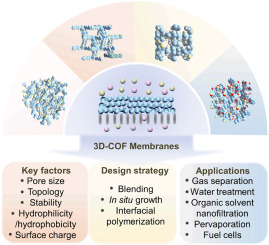
**Innovative Advancement in Carbon Capture: COF-999, A Promising Material Created by the University of California, Berkeley**
Scientists at the University of California, Berkeley, have achieved a major breakthrough in carbon capture technology with the creation of a new material named COF-999—a covalent–organic framework (COF) designed to capture carbon dioxide (CO₂) directly from the atmosphere. COF-999 demonstrates robust chemical and thermal stability even after 100 cycles of capture and restoration, which could transform direct air capture (DAC) methods aimed at tackling the global climate crisis.
### The Increasing Significance of Carbon Capture
As the climate crisis casts a shadow over global economies, technologies that extract CO₂ from the air are poised to become essential in mitigating the impacts of greenhouse gases. While immediate and decisive cuts in emissions remain the preferred solution, the slow pace of international efforts to address emissions makes direct air capture an increasingly vital tool.
DAC technologies are especially attractive because atmospheric CO₂ concentrations, while sufficient to pose risks, comprise only slightly more than 0.04% of the overall atmosphere. This presents hurdles, as existing DAC systems incur significant energy and operational expenses. Experts contend that the process is both costly and energy-intensive, highlighting the necessity for more advanced, stable, and efficient materials to alleviate these challenges.
### A New Horizon Utilizing Reticular Chemistry
The creation of COF-999 leveraged the concepts of reticular chemistry—a discipline that empowers researchers to design and modify porous, crystalline structures for specific functions. The material is a covalent–organic framework that brings various benefits compared to current carbon capture substances. Essentially, the researchers altered the COF structure to create polyamines that specifically target atmospheric CO₂. Importantly, these polyamines are chemically bonded to the framework, ensuring they remain intact during multiple capture and regeneration cycles.
Dr. Omar Yaghi, a leader in reticular chemistry at UC Berkeley, underscores a key benefit of their material, emphasizing its longevity. “While some materials may have a higher capacity than ours, they are not capable of cycling—they may endure 10 cycles, and then that’s all. We have cycled 100 times without any performance degradation,” Yaghi states. This indicates the potential for thousands of capture cycles without performance decline, marking a significant advance in the quest for efficient DAC technologies.
The creation of COF-999 is particularly thrilling due to its resilience under chemical and thermal stress. Furthermore, its temperature for releasing captured CO₂ is lower than that of numerous existing materials, needing only about 60°C for release instead of the over 100°C required by other sorbents. Yaghi indicates that this minimal energy requirement could be fulfilled using waste heat—like that generated by power plants—further lowering the system’s energy expenses.
### Comparison to Alternative Materials
Despite this breakthrough, some researchers maintain a cautiously optimistic viewpoint regarding COF-999’s potential on a large scale. Radu Custelcean from Oak Ridge National Laboratory notes that while COF-999’s performance metrics are commendable—such as its cyclic CO₂ capacity and regeneration energy—they are “not outstanding” when stacked against other absorbents like aqueous amino acids. Nevertheless, Custelcean asserts that COF-999 represents considerable progress as a cyclable material, which is vital for prolonged application.
Promisingly, Yaghi’s team has reported even superior results in the laboratory. “My research student, Zihui Zhou, is nearing double the capture capacity of COF-999,” Yaghi remarks. If this enhancement is successful, it could significantly elevate the material’s capacity, placing it among the top contenders in existing carbon-capturing substances.
For context: with COF-999’s current capacity, almost 50,000 tonnes of the material would be necessary to build a facility capable of capturing one million tonnes of CO₂ annually. Experts estimate that to effectively implement global CO₂ mitigation strategies, as many as 1,500 such plants may be needed each year from 2030 to 2050.
### A Practical Route to Widespread Use?
While excitement surrounds COF-999, researchers acknowledge that large-scale implementation remains a distant goal. Yaghi emphasizes that the chemistry underlying COF-999 is clearly understood and feasible industrially since it relies on basic organic chemistry and many of the involved materials are already produced on an industrial scale. However, improvements in the current synthesis process are necessary for it to become more eco-friendly.
Currently, COF-999 production utilizes potentially harmful solvents like dichlorobenzene and butanol and necessitates several washing cycles with methanol. This, Custelcean argues, needs optimization to ensure that COF-999 can be effectively scaled for extensive DAC applications. Yaghi is cognizant of this need.